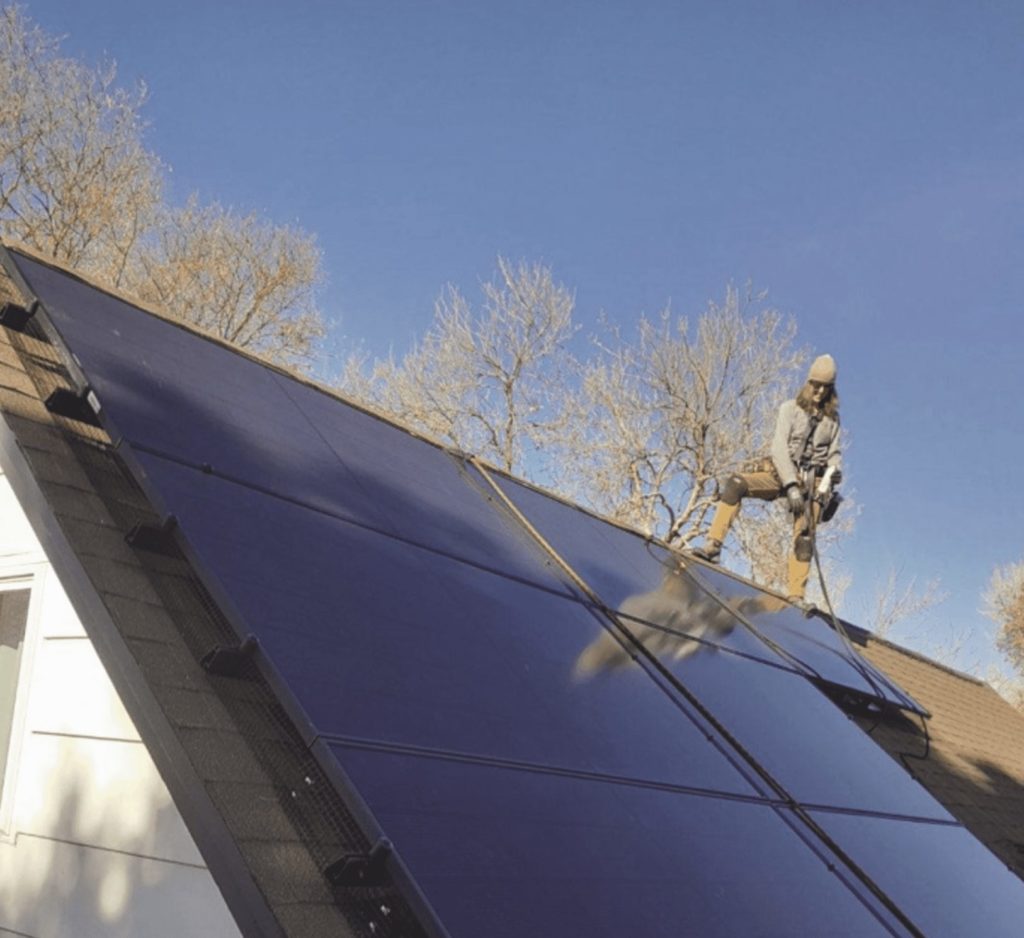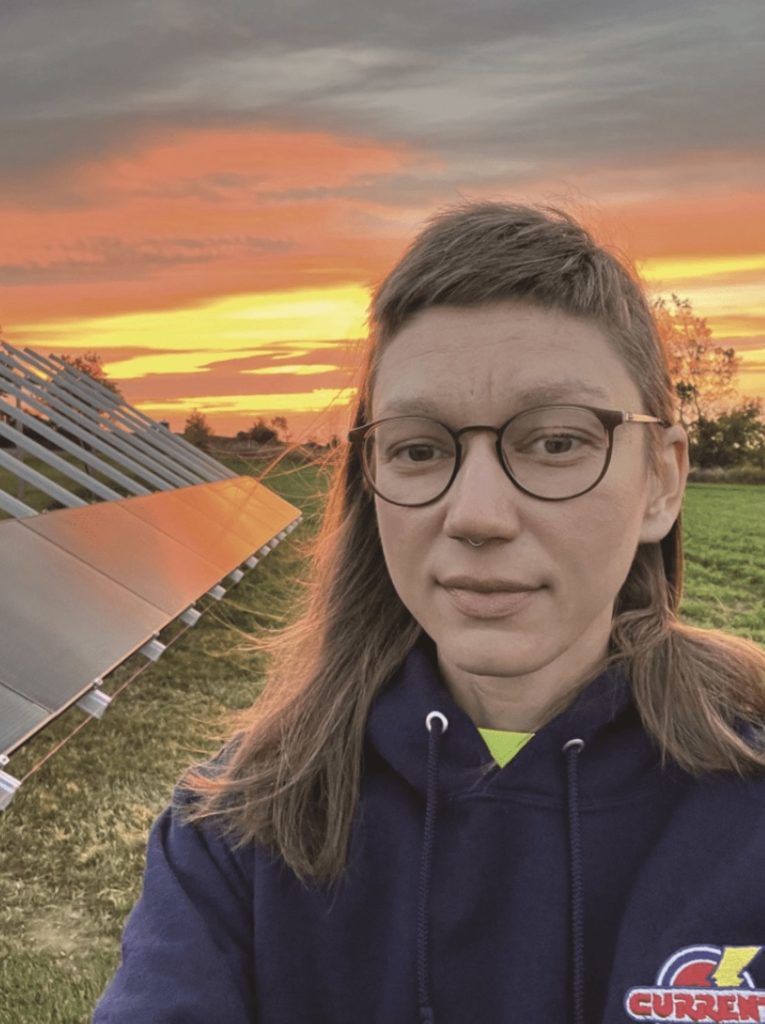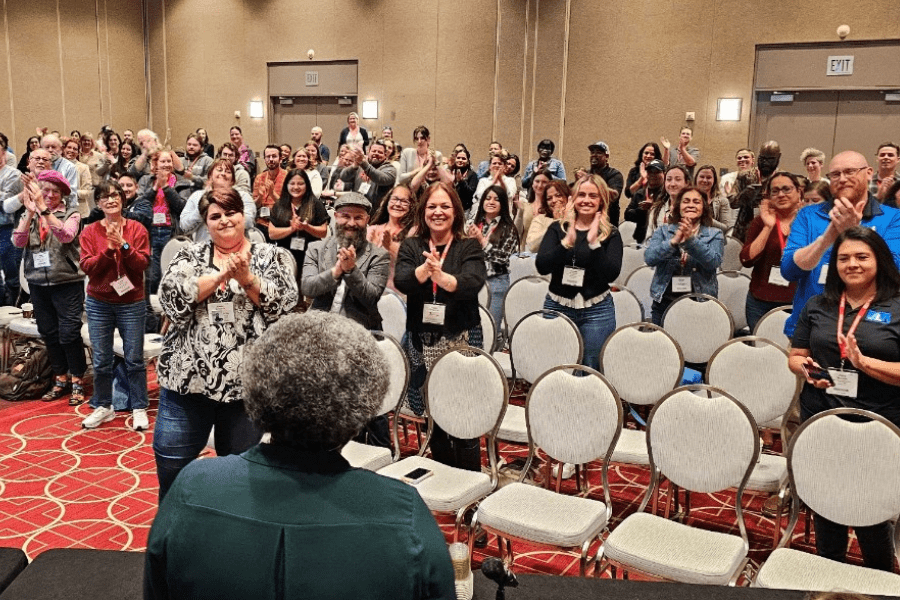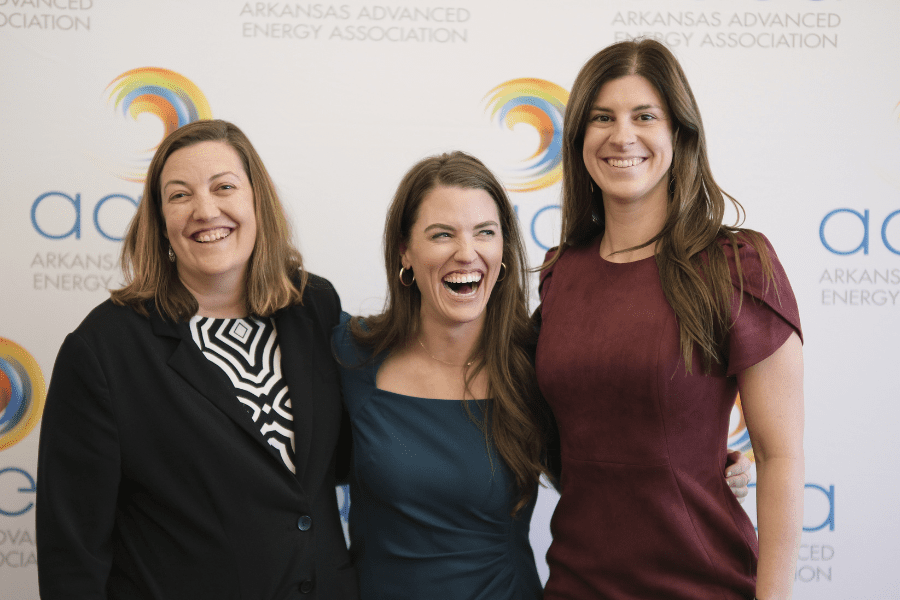Mar 1, 2023
Growing the Number of Female Installers
If we want women to work in the trades, there needs to be more effort made to change the culture. Being one of the only women in a male-dominated role, learning a technical skill, and also having to deal with learning how to navigate a potentially challenging culture is a lot to handle.
By: Riley Neugebauer

When I install solar power, I see there aren’t many women doing what I’m doing. I think it could and should be different. My estimate is that 1-3% of field roles in the United States (solar installers, field technicians, etc.) are staffed by women. While 50% would be nice, I don’t think it’s realistic. So I want to suggest we should aim for 1 in 10 women in the next decade, instead of 1 in 100.
Clear data about the number of women in field-based roles in solar doesn’t exist. We do know, according to the 2021 Solar Jobs Census, that 26-30% of the industry is made up of women, which includes office, manufacturing, and field roles.
According to the National Center for Women’s Equity in Apprenticeship and Employment, “In 2018, women’s share of workers in construction occupations reached 3.4%.”1 Female electricians were one of the slowest-growing groups.
U.S. Bureau of Labor Statistics data shows that women make up 11% of all the people employed in the construction industry, but also doesn’t indicate any breakdown by role.2
Globally, it seems that the numbers are better, given that the most recent 2022 global report on gender in the PV industry from the International Renewable Energy Agency found that women made up 12% of the total for solar-installer positions around the world.3
I find that the often cited 26-30% number about women in solar can be misleading, given how many different roles are covered. My sense is that there are many women in marketing, HR and sales; fewer women in project management and design; and almost no women in any field roles. Women comprise 4% of electricians nationally.4
My experience on the residential side of solar in the United States tells me that there are almost no women installing it, given that I’ve typically been the only one, or one of two, everywhere that I’ve worked. I was also the only woman in my one-year solar certificate at San Juan College many years ago.
So, if 30% is highlighted as a disappointing statistic and an area of opportunity, then I hope that 1-3% would also be considered disappointing… maybe even atrocious. I think we need to separate some of these roles more clearly in the data and know that recruiting more women into the solar trades is a different kind of effort and goal than recruiting more women into other solar jobs.
In addition, the number of women of color in the field is far lower. Jan Scott, a Native American woman who is a lead installer at Independent Power in Boulder, Colorado, said that she’d “like to see more women of color in the solar industry, mainly in the operational side. Sometimes, though, you gotta be the first to pave the way. And I’m here to break those glass ceilings.”

“The time is ripe for women to finally gain footing in this profession,” said Jenny Conrardy, apprentice electrician at Current Electric in Wisconsin. “It is amazing to watch the industry morph to try to increase inclusiveness for women. We need more females to be able to help set this new tone.”
Why Care?
The solar PV industry is the fastest-growing renewable energy sector worldwide, accounting for more than a third of the total workforce. IRENA estimates that globally, solar PV jobs could grow from 4 million now to 15 million by 2050, depending on what climate path we choose to follow.5
Policies around the world will play a big role. The recent passage of the Inflation Reduction Act in the United States, securing 10 years of the solar ITC among other perks, further solidifies the expected growth in solar. A recent Solar Energy Industries Association and Wood Mackenzie report estimates that the industry will grow 40% by 2027 as a result of the passage of the new legislation.6
Most of the growth that has already happened in the industry is taking place within the solar-installation and project development sectors. The largest percentage of all solar-industry jobs in 2021 (nearly 30%) was in installation and repair.
So we have a lot of growth predicted in the next decade and beyond. There is an extensive need for workers in the installation sector in particular. 89% of the films surveyed for the 2021 Solar Jobs Census reported difficulty finding qualified applicants.7 Yet only a third of solar firms have developed a strategy to increase the diversity of their workforce.
If you can’t find workers and your labor pool is homogeneous, then it seems clear to me that leaving women (over 50% of the population) out of your strategic recruitment and hiring efforts is not helpful.

What Do We Do?
Strengthening Metrics
Companies need to improve data collection, goal setting, and information sharing. They should share their goals for hiring more women so that there can be some accountability. I think this needs to be part of a larger diversity, equity, and inclusion effort that includes strategies for diversifying the workforce more broadly. Let’s form a national coalition that focuses on training, recruiting, and retaining women in the solar trades!
“We’re at a critical point in clean energy where we are going to see exponential job growth and have an opportunity to ensure this growth is accessible to women and other historically underrepresented groups in the energy and construction trades,” said Alyssa Thomas, workforce development and apprenticeships program manager at SunPower.
“Through SunPower’s 25×25 initiative, we have pledged to reach 40% women in our workforce by 2025,” Thomas said. “We’re doing this through installer-training partnerships for women with Solar Energy International and Grid Alternatives; our women’s employee resource group, EmpowHER; and training for employees in DEI and allyship.”8
Changing the Culture
If we want women to work in the trades, there needs to be more effort made to change the culture. Being one of the only women in a male-dominated role, learning a technical skill, and also having to deal with learning how to navigate a potentially challenging culture is a lot to handle. That is a big reason why many women don’t choose to do it or don’t stick around.
Company leadership needs to create expectations around respectful workplace culture and the accountability to go with it. Ensure that promoting people into lead installer roles and beyond is related to more than just technical ability. It includes good leadership, awareness, and communication that is important for the whole company, not just women.
Using a Cohort Approach
It can feel overwhelming to enter a male-dominated space in the trades or be the only woman on a job site, so having a group of women who can learn together and work together after being hired can make a big difference in recruiting and retaining them.
Carol Weis, co-founder of Remote Energy, said, “I have been actively teaching women’s solar classes for over 20 years because as a solar electrician and trainer, I never saw many women in the room until I was teaching women-only classes.”
“Participants in women’s-only classes state they are intimidated to be one of the only women in a male-dominated class and industry,” Weis said.
Recruiting and Retaining Women
Rather than focusing on recruitment as a first step, companies really have to take a step back, evaluate their retention plans, and see what they are doing to create environments for diverse workplaces.
Missy Mackin, program manager for trailblazers and gender equity at Vermont Works for Women, said in an email that companies should make sure they’ve built supportive workplaces before they hire women. “The old model of ‘sink or swim’ doesn’t work anymore. Some basics to consider are:
- Offer mentorship: Having a female mentor is the single greatest predictor of retention for women in the trades.
- Manage well: Provide ongoing direct supervision of all new employees. Women often report being given tasks [that] are either too easy or far beyond their skill set and [comfort level], often because crews lack supervision and are unprepared (and not paid) to teach new hires.
- Stop microaggressions: Learn what microaggressions are and shut them down just as you would those more obvious instances of harassment. Make sure your subcontractors are on the same page.
- Provide benefits: Offer benefits attractive to women such as flexible scheduling. Think outside the box.”
Once you feel that your company is a good workplace for women, she said, attend recruitment events that will attract a diverse audience, post jobs in more than the typical places, and ensure that you are talking with potential candidates about what the job entails, because this certainly isn’t the job for everyone. Also, be clear if candidates can apply without prior experience. Outline what your training program looks like.
Training
Training is a critical piece of increasing the number of women in the solar trades. You might consider forming pre-apprenticeship programs for women in solar, participating in registered apprenticeships, developing/updating in-house training programs, and/or partnering with other organizations who can offer paid training to your employees and then assisting with tuition and fees for these programs.
SEI is one of the key organizations offering training for women in the United States. Justine Sanchez, PV+storage curriculum developer and trainer for SEI, said: “When it comes to all solar employment sectors, installation and system design happen to be concretely in SEI’s area of expertise. Thus, SEI is uniquely positioned to play a critical role to bridge the gender gap that exists as we build the nation’s solar-installation and project-development workforce.”
“SEI, along with industry partners such as SOLV Energy, Nextracker, SunPower, and hopefully many more, is now focused on removing financial, situational, and emotional barriers through scholarships, women’s workshops, and networking to increase the number of women that are trained for solar jobs,” Sanchez said.
K-12 Education
We need to empower girls with solar STEM education and hands-on workshops to help inspire them to pursue technical careers in solar.
“We Share Solar believes strongly in promoting girls’ education in STEM by providing meaningful hands-on opportunities and investing in training and job opportunities to increase participation of women in the solar sector,” said Wendy Cross, program director at We Share Solar.

“Recruiting the new, more diverse workforce is a long game and employers need to be intentional about recruitment,” Mackin said. “In order to find female-identifying workers, they’ll want to make connections with schools and provide girls information about all of the careers available to them.”
What’s Next?
Solar is a rapidly growing industry, contributing to the efforts to address global climate change. It is further supported by recent national legislation. It’s an industry in need of more workers quickly. And yet, like many construction industries, it faces challenges with finding workers due to fierce competition, outdated culture, low diversity, and inadequate skilled labor.
We are at an important moment in the industry when we need to pursue a broader commitment to diversity, equity, and inclusion.
Ultimately, hiring more women is going to be just as much about creating a safe space and focusing on empowerment as it is about effectively delivering training on technical skills. Women will want to work for companies where they see other women who are happy with their jobs. Let’s lay the groundwork to help make that happen.

Sources
- https://tinyurl.com/5hy5nafv
- https://tinyurl.com/yc3asfmz
- https://tinyurl.com/2kbsh498
- https://tinyurl.com/5hy5nafv
- https://tinyurl.com/ms9dncsr
- https://tinyurl.com/4w328nfy
- https://tinyurl.com/374cwmw6
- https://tinyurl.com/4tf6yx53
This article was originally published in Solar Today magazine and is used with permission.




